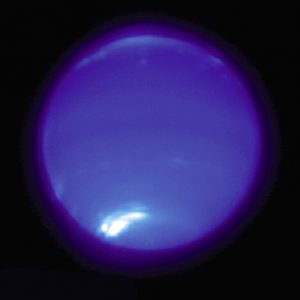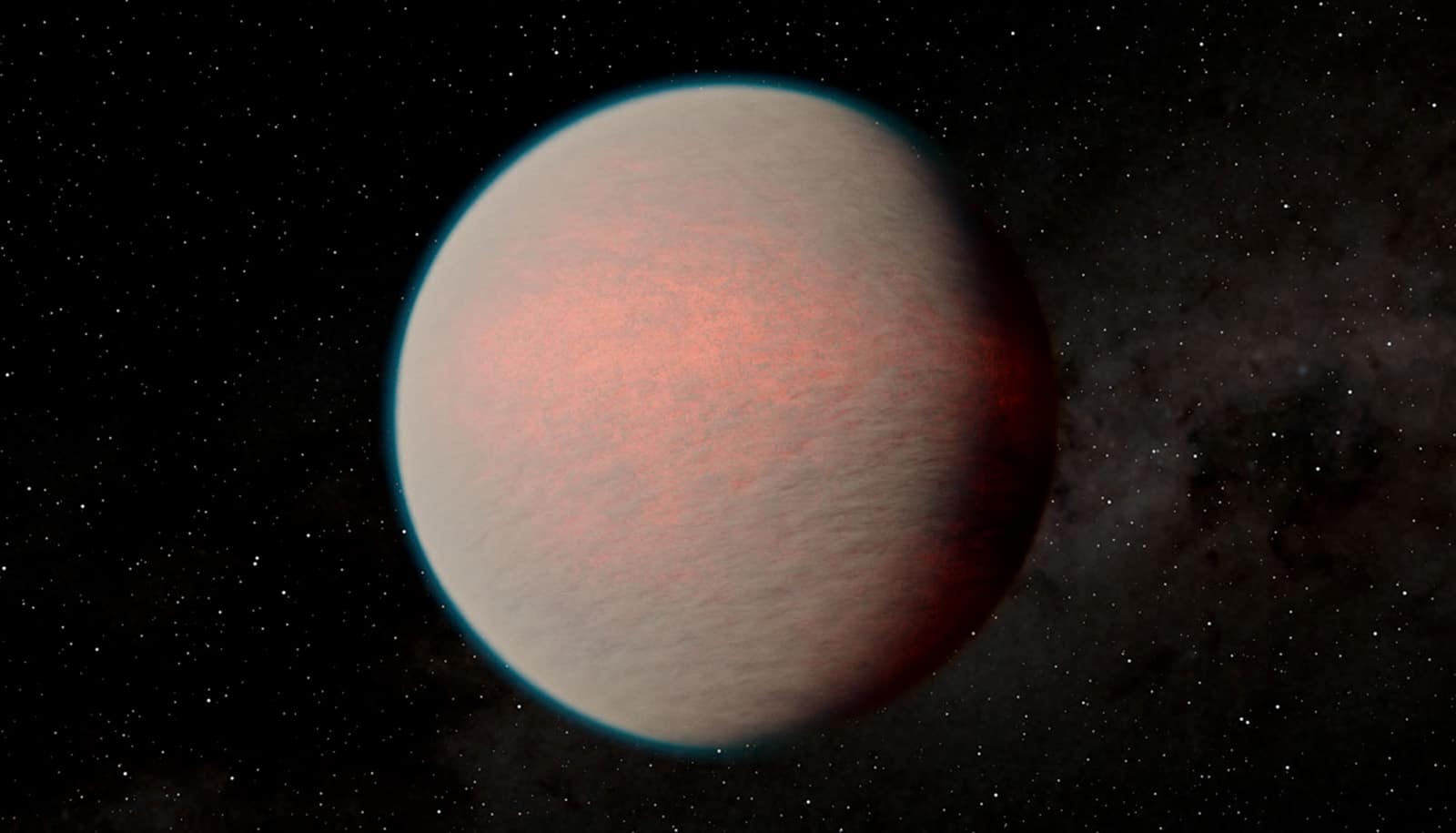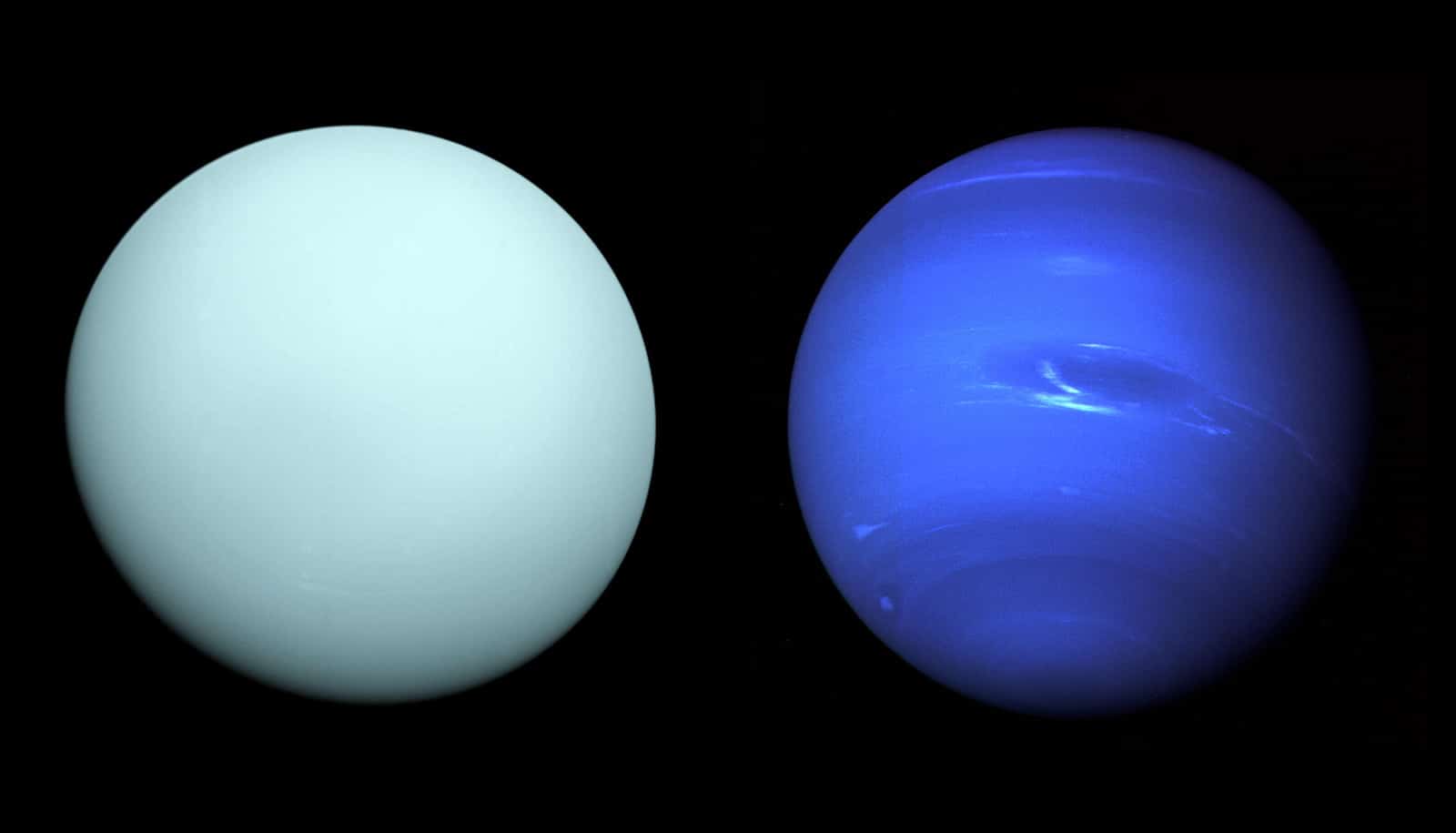For the first time in nearly three decades of observations, clouds seen on Neptune have all but vanished.
Images from 1994 to 2022 of the big blue planet captured from Maunakea on Hawaii Island through the lens of W. M. Keck Observatory, along with views from space via NASA’s Hubble Space Telescope, show clouds are nearly gone with the exception of the south pole.
The observations reveal a connection between Neptune’s disappearing clouds and the solar cycle—a surprising find given that Neptune is the farthest major planet from the sun and receives only 1/900th of the sunlight we get on Earth.
Astronomers discovered the abundance of clouds normally seen at the icy giant’s mid-latitudes started to fade in 2019.

“I was surprised by how quickly clouds disappeared on Neptune,” says Imke de Pater, emeritus professor of astronomy at the University of California at Berkeley, and senior author of the study in the journal Icarus. “We essentially saw cloud activity drop within a few months.”
“Even four years later, the images we took this past June showed the clouds haven’t returned to their former levels,” says Erandi Chavez, a graduate student at Harvard University’s Center for Astrophysics who led the study when she was an undergraduate astronomy student at UC Berkeley. “This is extremely exciting and unexpected, especially since Neptune’s previous period of low cloud activity was not nearly as dramatic and prolonged.”
To monitor the evolution of Neptune’s appearance, Chavez and her team analyzed images taken from 1994 to 2022 using Keck Observatory’s second generation Near-Infrared Camera (NIRC2) paired with its adaptive optics system (since 2002), as well as observations from Lick Observatory (2018-2019) and the Hubble Space Telescope (since 1994).
In recent years the Keck Observatory observations have been complemented by images taken as part of Keck Observatory’s Twilight Observing Program and by Hubble Space Telescope images taken as part of the Outer Planet Atmospheres Legacy (OPAL) program.
The data revealed an intriguing pattern between changes in Neptune’s cloud cover and the solar cycle—the period when the sun’s magnetic field flips every 11 years, causing levels of solar radiation to fluctuate. When the sun emits more intense ultraviolet (UV) light, specifically the strong hydrogen Lyman-alpha emission, more clouds appear on Neptune about two years later.
The team further found a positive correlation between the number of clouds and the ice giant’s brightness from the sunlight reflecting off it.
“These remarkable data give us the strongest evidence yet that Neptune’s cloud cover correlates with the sun’s cycle,” says de Pater. “Our findings support the theory that the sun’s UV rays, when strong enough, may be triggering a photochemical reaction that produces Neptune’s clouds.”
The connection between the solar cycle and Neptune’s cloudy weather pattern is derived from 2.5 cycles of cloud activity recorded over the 29-year span of Neptunian observations. During this time, the planet’s reflectivity increased in 2002 (brightness maxima), then dimmed (brightness minima) in 2007, became bright again in 2015, then darkened in 2020 to the lowest level ever observed, which is when most of the clouds went away.
The changes in Neptune’s brightness caused by the sun appears to go up and down relatively in sync with the coming and going of clouds on the planet.
However, more work is necessary to unpack this correlation given the complexity of other factors; for example, while an increase in UV sunlight could produce more clouds and haze, it could also darken them, thereby reducing Neptune’s overall brightness. Storms on Neptune rising up from the deep atmosphere affect the cloud cover, but are not related to photochemically-produced clouds, and hence may complicate correlation studies with the solar cycle.
Continued observations of Neptune are also needed to see how long the current near-absence of clouds will last.
This discovery adds to the exciting observations of the blue-hued world’s wildly active and chaotic atmosphere, which feature methane clouds that are whipped around by supersonic winds—the fastest wind speeds recorded anywhere in our solar system. One of the earliest and most striking images was captured by NASA’s Voyager 2 spacecraft during its flyby of Neptune in 1989, revealing a massive storm system named the “Great Dark Spot.”
Other storms and dark spots have been spotted since, in particular a large equatorial storm in 2017 and a large dark spot at northern latitudes in 2018.
“It’s fascinating to be able to use telescopes on Earth to study the climate of a world more than 2.5 billion miles away from us,” says Carlos Alvarez, staff astronomer at Keck Observatory and coauthor of the study. “Advances in technology as well as our Twilight Observing Program have enabled us to constrain Neptune’s atmospheric models, which are key to understanding the correlation between the ice giant’s climate and the solar cycle.”
The research team continues to track Neptune’s cloud activity. The recent images taken in June 2023 were obtained at the same time as when NASA’s James Webb Space Telescope (JWST) captured near- and mid-infrared images.
“We have seen more clouds in the most recent images, in particular at northern latitudes and at high altitudes, as expected from the observed increase in the solar UV flux over the past ~2 years,” says de Pater.
The combined data from JWST and Keck Observatory will enable further investigations into the physics and chemistry that leads to Neptune’s dynamic appearance, which in turn may help deepen astronomers’ understanding not only of Neptune, but also of exoplanets.
Source: UC Berkeley


